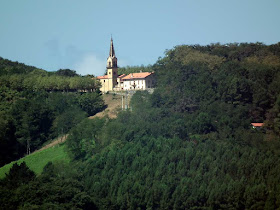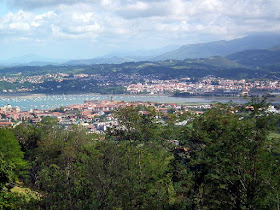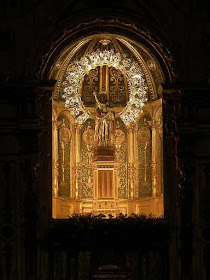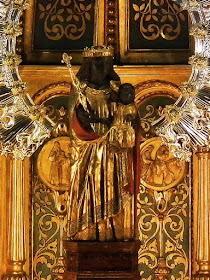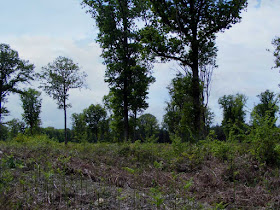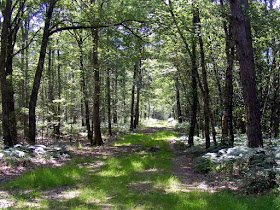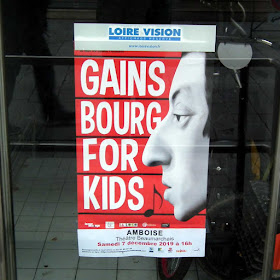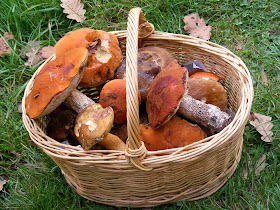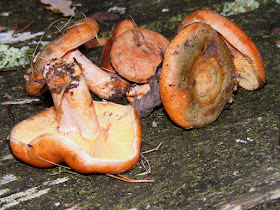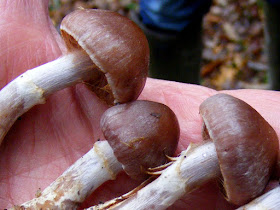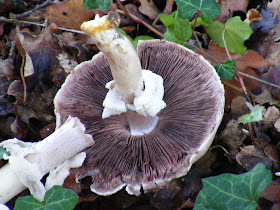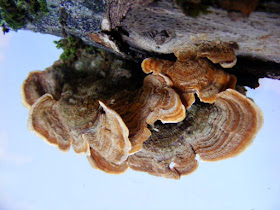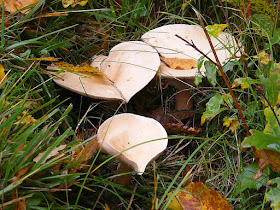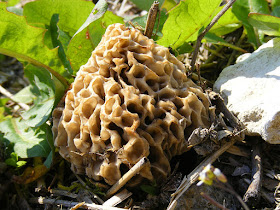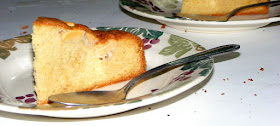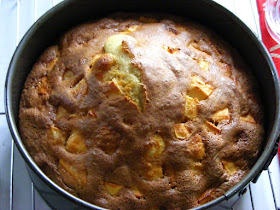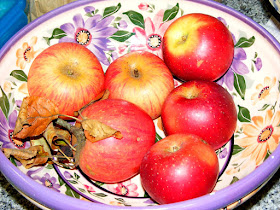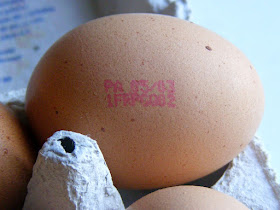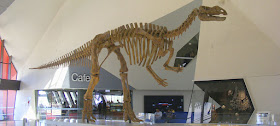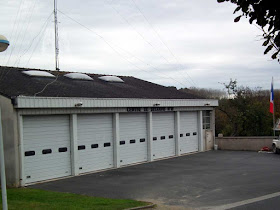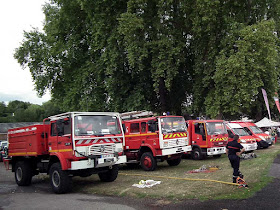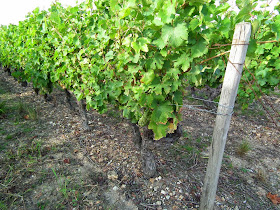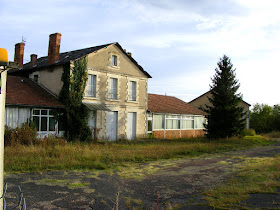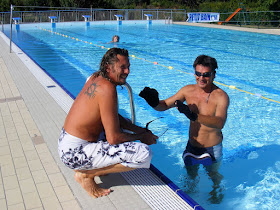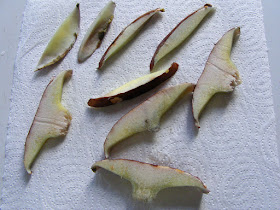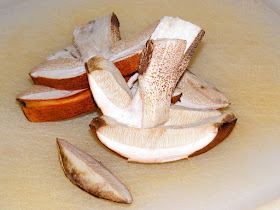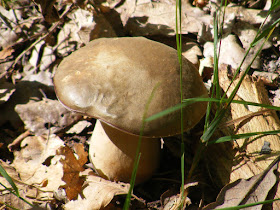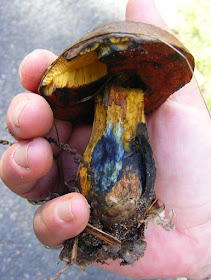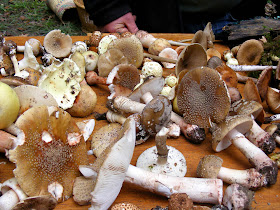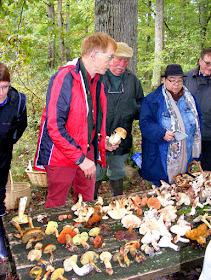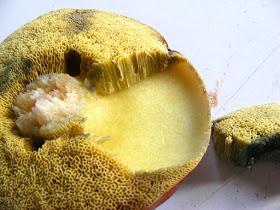A wild foraged Bay-brown Bolete prepared and ready to cook.
Every year a quite remarkable number of people manage to ingest toxic mushrooms in France. Over a thousand people every year are treated for mushroom poisoning, and 30 to 40 people will die.
There is always a sharp spike in incidents at the beginning of the mushrooming season in October. I find these figures astonishing.
In a country where mushroom picking is a popular pastime and where there are innumerable really knowledgeable people out there to learn from, just how do people manage to misidentify mushrooms so frequently? What is really difficult to believe is that these people are eating mushrooms they have themselves picked, and they cannot apparently tell a gilled mushroom from a mushroom with pores and tubes.
I am just astounded by how unobservant these people must be.
Death Cap Amanita phalloides (Fr. Amanite phalloïde) -- extremely toxic.
Note the sickly yellowy beigey greeny cap and the volva (a sort of sack at the base of the stem).
More often than not people are eating the lethal
Death Cap, thinking they are eating nice safe, delicious
Ceps!! The most recent episode was in Deux Sevres, where a woman died and her husband and sister in law were hospitalised, seriously ill. In the same fortnight, at the end of October, there were nearly 500 other cases of mushroom poisoning in France, as the weather changed and the mushrooms appeared.
Dark Cep Boletus aereus (the approved vernacular name in French is the Cèpe bronzé, but in rural areas it is still usually referred to as the Tête de nègre).

Mushrooms in the Boletaceae (Ceps and boletes) family are easy to recognise (I would have thought!!) because they do not have gills, but a sort of sponge made up of pores called hymenophores under their caps. Ceps (Fr. cèpes) and boletes, also often known in English by their Italian name porcini, are the most widely sought after wild foraged mushrooms.
They have the advantage of being easy to recognise and having few species that will
poison you. There are only a couple of poisonous species possible in this area. None are deadly, and foragers will be put off them by their appearance or taste long before ingesting enough to cause digestive upset.
Many boletes stain very unappetising colours such as blue or black
when broken, and some taste very bitter. Breaking a small piece off the cap and watching for staining, plus tasting the piece then spitting is an essential part of checking the identity of these mushrooms.
Staining or bitterness is not an indication that the mushroom is poisonous per se -- numerous boletes that stain or taste nasty are non-toxic -- but it does mean that you are unlikely to make the mistake of eating the poisonous ones because they will be amongst those that you reject as they don't look or taste nice. Boletes with red pores and flesh that stains blue should always be avoided.
Left, Bay-brown Bolete Xerocomus badius (Fr. Bolet bai) and
right, Edible Cep Boletus edulis (Fr. Cèpe de Bordeaux).
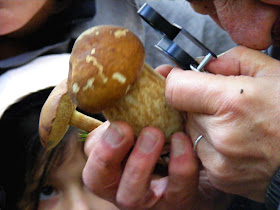
Death Caps are responsible for 90% of deaths related to mushroom consumption in Europe. They contain a toxin which damages kidneys and livers, which is not
destroyed by cooking, drying or freezing.
The initial symptoms are
digestive discomfort, with diarrhea, nausea, vomiting and abdominal
pains within 5 -12 hours of consumption and lasting for a couple of
days. This can lead to dehydration, hypertension, tachycardia and
hypoglycemia.
Then typically the symptoms fade for several days, only to
return once it is too late and irreparable damage has been done to the
kidneys and liver. Delerium, fits, coma and death after 6 - 16 days
result if treatment is not sought.
Early treatment usually involves
activated carbon or stomach pumping plus rehydration, later treatment a
liver transplant, and is not guaranteed to succeed (10 - 15% of patients
still die, especially children). There is no recognised antidote to the
toxin.
The lethal dose can be as little as half a cap. Many mycologists
will advise never eating any Amanita spp, but especially the
white gilled ones, as a precaution. Others will go so far as to say do not even
touch Death Caps and do not eat any mushroom which has any possibility
of being contaminated by proximity to a Death Cap (eg in the same picking
basket).
Curiously, some mammals, such as rabbits and squirrels, appear
to be able to eat Death Caps and suffer no ill effects. Slugs can also
eat them, but this is less surprising as their digestive systems are
very different to ours.
Orange Oak Bolete Leccinum aurantiacum (Fr. Bolet orangé)
-- edible but not the most prized species.
Edible Cep Boletus edulis (Fr. Cèpe de Bordeaux).
Note the fine pale border to the 'nubuck' cap, and thick, 'vase shaped' stem.
Scarletina Bolete Neoboletus praestigiator (Fr. Bolet à pied rouge).
An edible species, although most people do not risk it,
because of its resemblance to a toxic species and its generally unappetising appearance.
A mixture of toxic Panther Cap Amanita pantherina (Fr. Amanite panthère)
and edible Blusher Amanita rubescens (Fr. Amanite rougissante).
The mushrooms in the photo above are closely related to the Death Cap, and possess the same white gills. Gills (Fr. lames) are the delicate structures that radiate out from the stem under the cap of many mushrooms.
The gills of the button mushrooms Agaricus bisporus (Fr. champignons de Paris) that you buy in the supermarket start off pink and go brown with age. The gills of Amanita spp, many of which are toxic, are white.
That is why it is sage advice to avoid all white gilled mushrooms unless you are a very experienced forager.
Dominique Tessier, an experienced mushroom surveyor,
explaining the key characters to look for in the Death Cap he is holding.
Didier Raas, an expert mycologist and pharmacist from Loches, holding an Edible Cep during a public outreach and fungi education session (other boletes on the left hand end of the table).
Didier leads mushroom foraging outings in the Forest of Loches several times each autumn. Any one is welcome to turn up and learn from him. Details are usually advertised in the Tourist Office and the local paper (plus you can ask me as I generally have a list of upcoming outings).
Bay-brown Bolete, showing the identifying spongelike pores and tubes under the cap.
If your mushroom has cream or yellow coloured pores and tubes like this under the cap it is safe to eat. The unappetising looking blue staining in this species only affects the pores, and as for all boletes, it is best to remove the 'sponge' before cooking. It is full of water and not very nice texturally.
If your mushroom just has pores, but no tubes, it is not a bolete. If your mushroom has gills it is not a bolete. If it is not a bolete it may be best not to eat the mushroom.
Boletes and Death Caps are abundant in the forests of the Loire Valley and many people regularly go mushroom foraging. If you see a car parked on the side of the road in the forest in the autumn the unseen occupants are more likely to be mushroom foraging than dog walking.
For full descriptions of boletes and Death Caps, go to my nature website, Loire Valley Nature.
Click here for Boletes
Click here for Death Cap
The French Department of Health has produced a nice
infographic on how to consume wild mushrooms as safely as possible and advises: "Do not buy mushrooms from street vendors. This practice is forbidden and dangerous. Individuals can neither sell nor give away mushrooms picked in the forest. They can only be for personal use."
************************************************
For details of our private guided tours of chateaux, gardens, wineries, markets and more please visit the
Loire Valley Time Travel website. We would be delighted to design a tour for you.
We are also on
Instagram, so check us out to see a regularly updated selection of our very best photos.

